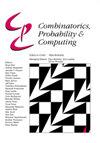Fe2O3-ZnO纳米复合材料的制备:结构与光学性能
IF 0.8
4区 数学
Q3 COMPUTER SCIENCE, THEORY & METHODS
引用次数: 0
摘要
Fe2O3/ZnO的合成由于其磁性、光致发光和催化性能,以及作为气体传感器中的活性元素,近年来得到了人们的认可。这种类型的复合颗粒具有生物学和生物医学的潜在应用,如检测癌症细胞、细菌和病毒以及磁分离。在本研究中,我们首先合成了Fe2O3/ZnO纳米颗粒,然后通过XRD、HRTEM、FESEM、XRF和FTIR分析对其结构、光学和表面形貌进行了研究。以六水氯化铁和七水硫酸锌为原料,采用溶胶凝胶法合成了Fe2O3-ZnO纳米粒子。开始时,将2g聚乙烯吡咯烷酮(PVP)稳定剂溶解在100mL去离子水中,然后在室温下搅拌将5g FeCl3添加到溶液中。然后向溶液中加入5g的ZnSO4,并将合成温度提高到100℃。将产物蒸发3小时,冷却至室温,最后在600℃下煅烧3小时。XRD结果表明,单相Fe2O3-ZnO纳米复合物具有ZnO的六方纤锌矿结构和菱形α-Fe2O3的尖晶石相。所制备的样品的微晶尺寸测定为约45nm,退火的样品的晶粒尺寸计算为约40nm。SEM图像显示,退火后随着温度的升高,Fe-Zn纳米颗粒由球形变为棒状。TEM研究表明,核壳纳米粒子的平均粒径为47nm。FTIR光谱中的尖锐峰确定了Fe和Zn基团在620565cm-1和410cm-1频率下的拉伸振动。XRD数据表明单相Fe2O3-ZnO结构。SEM图像显示,随着退火温度的升高,纳米颗粒由球形变为棒状。TEM图像显示核壳Fe-Zn纳米颗粒的平均直径约为37nm。FTIR数据表明,随着退火温度的升高,Fe-Zn拉伸模式的存在和峰的强度增加。XRF分析显示,铁和铁氧体元素的峰值以及Zn重量百分比从26.35%Wt增加。至49.26%重量。,通过提高温度。本文章由计算机程序翻译,如有差异,请以英文原文为准。
Preparation of Fe2O3-ZnO Nanocomposites: Structure and Optical Properties
The synthesis of Fe2O3/ZnO has gained acceptance in few years due to its magnetic, photoluminescence and catalytic properties and also, as active element in gas sensors. This type of composite particles has biological and biomedical potential applications such as detection of cancer cells, bacteria and viruses, and magnetic separation.
In the present study, first we have synthesized the Fe2O3/ZnO nanoparticles and then structural, optical and surface morphological properties are investigated by XRD, HRTEM, FESEM, XRF and FTIR analyses.
Fe2O3-ZnO nanoparticles were fabricated by a solgel synthesis by iron chloride hexahydrate and zinc sulfate heptahydrate. At the beginning, 2g of Polyvinylpyrrolidone (PVP) stabilizer was dissolved in 100 mL dionized water and then 5 g FeCl3 was added to the solution with stirring at room temperature. Then 5g of ZnSO4 was added to the solution and synthesis temperature was increased to 100oC. The product were evaporated for 3 hours, cooled to room temperature and finally calcined at 600oC for 3 hours.
The XRD results showed single-phase Fe2O3-ZnO nanocomposits with a hexagonal wurtzite structure of ZnO and spinel phase of rhombohedral α-Fe2O3. The crystallite size of as-prepared sample was determined about 45 nm and annealed one was calculated around 40 nm. The SEM images showed the Fe-Zn nanoparticles change from spherical shape to rod-shape by increasing temperature after annealing. The TEM studies showed the core-shell nanoparticles with mean diameter of 47 nm. The sharp peaks in FTIR spectrum determined the stretching vibrations of Fe and Zn groups in the frequencies of 620, 565 cm-1 and 410 cm-1.
The XRD data indicates single-phase Fe2O3-ZnO structure. The SEM images shows that the nanoparticles changed from sphere-like shaped to rod-like shaped by increasing annealing temperature. TEM image exhibits the core-shell Fe-Zn nanoparticles with an average diameter about 37 nm. From the FTIR data, it is shown the presence of Fe-Zn stretching mode and the intensity of the peaks increased by increasing annealing temperature. XRF analysis showed peaks of iron and ferrite elements and an increasing of the Zn weight percent were observed from 26.35 %Wt. to 49.26 %Wt., by increasing temperature.
求助全文
通过发布文献求助,成功后即可免费获取论文全文。
去求助
来源期刊

Combinatorics, Probability & Computing
数学-计算机:理论方法
CiteScore
2.40
自引率
11.10%
发文量
33
审稿时长
6-12 weeks
期刊介绍:
Published bimonthly, Combinatorics, Probability & Computing is devoted to the three areas of combinatorics, probability theory and theoretical computer science. Topics covered include classical and algebraic graph theory, extremal set theory, matroid theory, probabilistic methods and random combinatorial structures; combinatorial probability and limit theorems for random combinatorial structures; the theory of algorithms (including complexity theory), randomised algorithms, probabilistic analysis of algorithms, computational learning theory and optimisation.
 求助内容:
求助内容: 应助结果提醒方式:
应助结果提醒方式:


